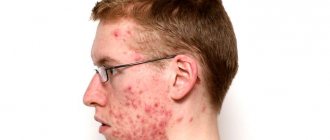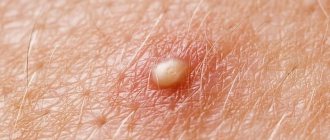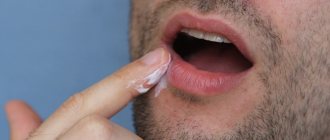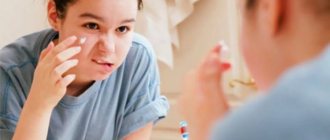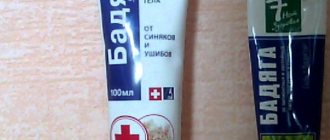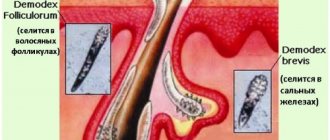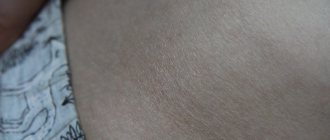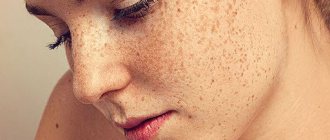Causes and mechanisms
Pimples with yellow contents are a sign of pyoderma or acne. Pustular elements appear due to bacterial flora, namely staphylococci. These are opportunistic organisms that live on the skin and scalp of many people. But not everyone gets pustular rashes, because the development of such acne is promoted by:
- Damage (cuts, abrasions, excoriation, burns, maceration).
- Pollution (dust, fuels and lubricants, physiological secretions).
- Hypothermia and overheating.
- Insufficient nutrition and vitamin deficiencies.
- Endocrinopathies (diabetes mellitus, hypothyroidism).
- Diseases of the digestive tract.
- Immunodeficiencies.
As we can see, the decisive role in pyoderma belongs to the decrease in the activity of local and systemic protective factors. Under such conditions, microbes easily penetrate the mouths of hair follicles, begin to multiply there and provoke an inflammatory reaction.
READ ALSO: Yarina for acne: how to take it, does it help or not
Acne occurs due to a combination of several factors: increased production and impaired sebum secretion, hyperkeratosis and accumulation of propionobacteria. Skin pores become clogged with fatty deposits and horny cells, which creates favorable conditions for the development of microbes. The appearance of acne is promoted by hormonal changes in the body (usually during puberty).
Pimples with a white head are superficial pyoderma caused by bacterial flora, or acne on the face that occurs when sebaceous secretion is impaired.
Causes of white pimples on the face or body of a baby
Although in theory it is believed that a baby's skin should be smooth as velvet, in practice this is not always the case. Various spots and irregularities may appear on it. It is not uncommon to have pimples on the face of a newborn with white heads. What could be causing them, and is it possible to fix it?
Acne in babies
Causes of pimples
White pimples on a baby's face and body rarely require specialized treatment. As a rule, they are short-term and completely harmless. The main reasons for their occurrence:
- If a newborn's white pimples look like blackheads, reddish with white heads (acne), then they may be caused by maternal hormones that affect the baby for some time after birth. They can also occur due to contact with the genital tract that occurred during childbirth.
Important! It has been proven that acne in infants can be caused by contact with a new environment: clothing, bedding, baby cosmetics, diapers, which affect the baby’s delicate skin.
- Another type of acne is milia, or prosyanka, small, dense white papules. The reason for their appearance is the insufficient functioning of the child’s sebaceous and sweat glands;
Milia on baby's face
- Lipophilic yeast (Malassezia) lives on human skin. This yeast-like fungus can colonize the epidermis in the first months of life. If there is a predisposition to atopic dermatitis, it can cause an allergic reaction in the baby and skin rashes.
Rashes on the face
Both acne and millet may appear on the baby's scalp. Blackheads typically do not itch or produce fluid. The places where hormonal acne appears are the cheeks, nose, forehead, chin, sometimes the ear and the hairy part of the head. They do not appear on the arm or leg.
If a newborn has white pimples on the skin of the eyelids, their causes may be:
- poor functioning of the sebaceous glands;
- contact with irritants (prolonged exposure to sunlight can also irritate the skin of an infant);
- lack of calcium at the time of teething.
Sometimes white pimples appear on the tongue and gums of a newborn. Their reasons may be:
- stomatitis due to infection in the baby’s mouth, and red pimples near the throat may be observed;
- thrush (characterized not by pimples, but by a white coating);
- pimples on the palate sometimes indicate dysbiosis.
Rash on other parts of the body
If there are white pimples on the child’s genitals (testicles in boys or labia in girls), possible causes are imperfect functioning of the sebaceous glands, diaper dermatitis, infections.
Pimples can also mean a skin allergy, most often a contact one, for example, to detergents used to wash clothes. Sometimes pimples appear along the edges of the diaper on the legs, closer to the groin.
In this case, there will be redness of the skin, and the pustules will be pink, without tips, filled with fluid.
Their appearance is accompanied by itching, which is a contact allergy to the diaper material.
What parents should do when pimples appear
Red spots on the face of a newborn baby
Important! If your child has acne, you need to make sure that the baby does not overheat. This is essential to keep your skin in good condition. When a baby is too warm, skin changes worsen.
The ambient temperature must be maintained at 20-22ºC. The skin on the back of the baby's head should be warm and dry. The bath must be taken at a temperature no higher than 37ºC.
What can you do
If your baby has pimples with white heads on his face or body, you can:
- When bathing, use potassium permanganate in low concentration;
- Care for your baby’s facial skin every day by wiping it with a cotton pad moistened with boiled water;
Washing a newborn
- A decoction of the string has a good effect on the skin. It is added to the bathtub for bathing the baby or, during hygienic procedures, it is treated with cotton wool dipped in a herbal decoction on areas where redness and pimples appear.
What should you be wary of?
White pimples in a newborn usually do not require a visit to the doctor. However, you should contact your pediatrician or pediatric dermatologist if:
- The child has purulent rashes. The doctor may start treating them with antibiotic ointment. Its use is necessary due to the risk of generalization of infection;
- Despite proper hygienic care, acne does not go away and even increases;
Rash growth
- Acne lesions appear in unusual places: they are not observed on the face, but only in the armpit, in the crooks of the arms, groin, and on the neck.
Important! The doctor may recommend a zinc suspension (Tsindol), which has an anti-inflammatory and slightly drying effect, to smear on the pimples.
When purulent pimples form and spread, if timely measures are not taken, the following complications may arise:
- streptoderma - a bacterial infection, especially often occurring in the diaper area and skin folds;
- furunculosis.
What is prohibited to do
Milia in a newborn appear as a result of clogged skin pores. These are stagnant epidermal cysts resulting from the accumulation of sebaceous masses. Such formations are not treated, are not lubricated, and it is strictly forbidden to squeeze them, because this can lead to infection and abscess. After a few days or weeks, milia go away on their own.
Cannot be used to treat pimples:
- strong solution of potassium permanganate;
- brilliant green;
- products containing alcohol;
- Fukortsin;
- fatty and hormonal ointments.
It is also not recommended to pour baby powder directly onto your child's pimples.
Important! You cannot independently prescribe antihistamines, antibiotics, or sorbents to your baby.
Emollients used to wash the baby (baby emulsions, gels and bath liquids) can be used for baby hygiene. They do not cause dry skin, do not disturb its delicate protective barrier, and even strengthen it and accelerate healing.
Symptoms
With superficial pyoderma (ostiofolliculitis), damage to the hair follicle occurs. At first, there is slight hyperemia and induration, painful on palpation. Then the nodule takes on a cone shape and a pustule is formed. The abscess looks like a red pimple with a white head located at the base of the hair. After a few days, the contents dry out, and the top of the pustule becomes covered with a crust.
Ostiofolliculitis can be limited or occupy large areas of the body. Such pimples are located in groups, but do not have a tendency to merge. Sometimes individual elements increase to 10 mm in diameter, which suggests another form of pyoderma - Bockhart's staphylococcal impetigo. It often occurs as a complication of scabies.
READ ALSO: Foundation for oily skin: rating of the 13 best creams
Pimples on the face, which are a sign of acne, can be of different types. They are represented by the following elements:
- Comedones (open and closed).
- Papules.
- Pustules.
- In knots.
- Cysts.
Comedones are non-inflammatory pimples that appear when the excretory ducts of the sebaceous glands are blocked. The closed elements are white, and the open ones have a black top. They are mainly localized on the forehead and chin. The skin looks shiny and the hair looks oily.
Further inflammation leads to the appearance of papulopustular rashes. Small pustules heal without a trace, while larger ones leave behind scars. The spread of the process deeper is accompanied by the formation of nodes and cystic cavities.
The clinical picture is determined by the cause of acne and the stage of its development. Visual signs form the basis of a preliminary diagnosis.
